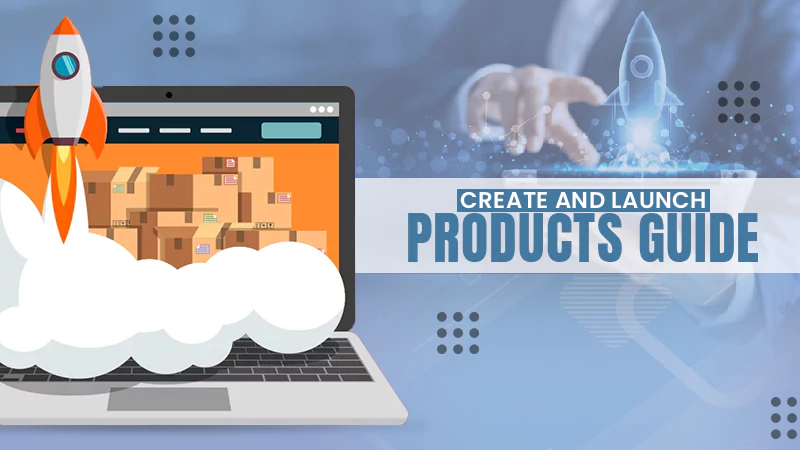Summary: In this Article, you’ll get to read about —
There is nothing permanent except change. ~ Heraclitus (Greek Philosopher)
Be it your normal life or a business, change is significant to stay relevant. When the subject is a product, it needs to be constantly evolving and continuously innovating so that it can solve modern problems with modern solutions.
Also, from the consumer point of view, a static product with no change in design and technology becomes lame and old-fashioned over time. This is why, to grasp and maintain dominance in the market, it is necessary to change and adapt to it.
Further proceeding on this subject, this article will guide you and enlighten you with a guide to efficiently creating and launching the product that will create its legacy among consumers.
Unleashing Creativity in Ideation
Ideation is the first step in the product development process; it is the act of coming up with, honing, and perfecting creative thoughts. Developing a creative culture within your team creates an environment that is conducive to the generation of game-changing concepts. Promote open communication, cross-functional teamwork, and brainstorming sessions to foster innovation and reveal new viewpoints.
When generating ideas, think beyond the box and go into unfamiliar domains. Take ideas from a variety of places, including industry trends, consumer input, and new technology. Accept experimenting and taking calculated risks, understanding that failure is a necessary component of the creative process.
DID YOU KNOW? Statistics show that a huge percentage of total products, i.e., 95% of them, fail after they get launched in the market.
Strategic Market Research and Analysis
Conducting thorough market research is noteworthy before starting the product development process in order to identify unmet requirements, evaluate competitive environments, and estimate market demand. To get a comprehensive understanding of customer preferences, habits, and pain points, allocate time and resources toward the collection of both qualitative and quantitative data.
Utilize focus groups, surveys, competition analysis, and market research techniques to get relevant information and guide decision-making. Determine new trends, consumer inclinations, and market gaps that provide rich chances for innovation.
Crafting Compelling Brand Identity
Building a strong and recognizable brand identity is paramount for grabbing customers’ attention and encouraging brand loyalty in the current market. Your brand identity reflects your beliefs, personality, and distinctive value offer and goes beyond a simple logo or phrase. Invest in developing a captivating brand story that connects with your target market and distinguishes you from rivals.
Establish your brand’s purpose, vision, and core values first, making sure they reflect the goals and demands of your intended audience. Create a unified system of brand identification that includes visual components that represent the spirit of your company and appeal to the senses of your target audience, such as logos, color schemes, typography, and photography.
Packaging: The Silent Salesperson
Packaging has a major impact on how customers perceive products, how they decide what to buy, and how visible a brand is on store shelves. Packaging not only protects the goods but also acts as an effective marketing tool, conveying your brand’s identity and value offer. To get the best service you can also opt for reaching out to a professional packaging manufacturer.
When creating product packaging, give equal weight to sustainability, use, and beauty. Make an investment in premium components, striking designs, and creative packaging ideas to grab customers’ attention and set your company apart from rivals. Think about using interactive components to engage customers and improve their entire brand experience, such as augmented reality, QR codes, or tactile features.

Seamless Product Development Process
To successfully and economically transform creative ideas into concrete goods, a simplified product development process is necessary. By using agile approaches, cross-functional cooperation, and iterative prototyping, you may reduce risks, expedite the product development cycle, and quickly adapt to changing market conditions.
Throughout the whole product development process, give top priority to the wants and preferences of the consumer by asking for input often and early on. To maintain the integrity and dependability of your product, put strong quality assurance policies and strict testing methods into place. Long-term success and exceeding customer expectations may be achieved by cultivating a culture of innovation and continual development.
Strategic Go-to-Market Strategy
To introduce your goods and maximize their influence in the market, you need a well-thought-out go-to-market plan. Create a thorough launch strategy that includes distribution options, price and product positioning methods, and marketing techniques that are specific to your target market and its characteristics.

Use omnichannel marketing strategies to build excitement and anticipation for your product launches, such as influencer collaborations, digital marketing, social media engagement, and experiential marketing campaigns. Use performance metrics and data-driven analytics to monitor key performance indicators, gauge success, and adjust your go-to-market plan as necessary.
Conclusion
Product development and launch involve a calculated fusion of innovation, market research, and flawless execution. Recall that innovation is an ongoing process of development and improvement rather than a final goal. Maintain your flexibility, welcome change, and take advantage of chances to stand out from the competition in the ever-changing industry.



